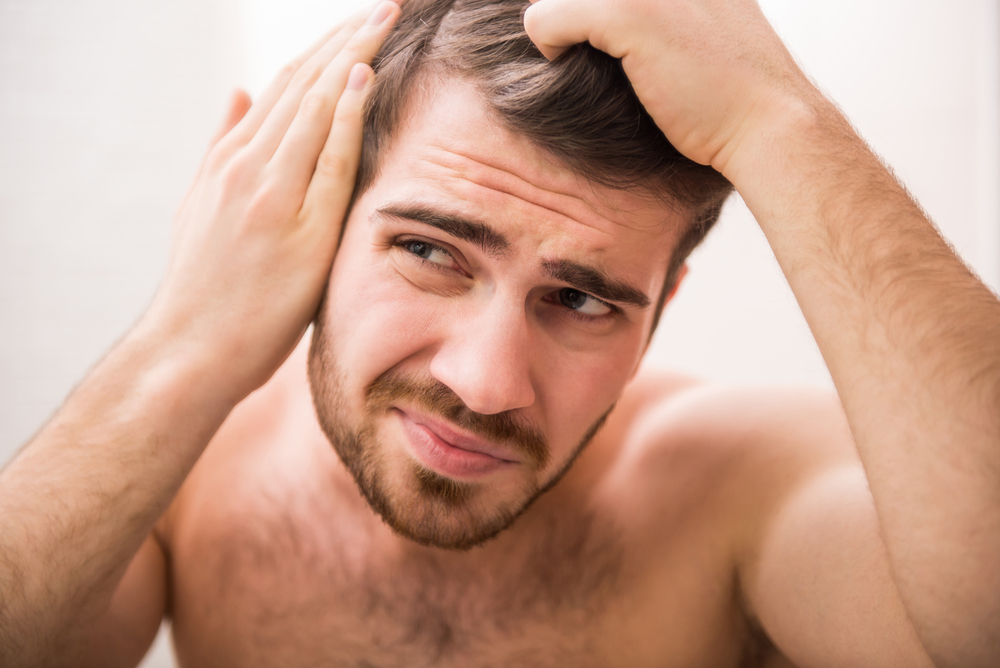
Pattern hair loss is the most common type of diffuse thinning of the hair and balding in adults. Both male and female hair loss is an issue that millions face, and it affects over 50% of people in their lifetime.
Pattern hair loss can be caused by several factors, including hormonal changes, a shock to the body, and even repeated hairstyles. Hair growth and appearance can be a significant part of a person’s identity, and hair loss can profoundly impact how we feel about ourselves. If pattern hair loss negatively affects your self-confidence, it’s time to consider PRP therapy for hair regrowth.
Most Common Causes of Pattern Hair Loss
Anyone can experience hair loss, but it is most commonly seen in men. Baldness typically refers to excessive hair loss from your scalp, and hereditary hair loss is the most common cause. Hair loss can appear in many different ways, depending on the circumstances.
Hereditary Hair Loss
The most common cause of hair loss is genetic. This type of hair loss typically occurs gradually with aging and develops in predictable patterns.
Hormonal or Medical Hair Loss
Many conditions can cause hair loss, including hormonal changes due to pregnancy, childbirth, menopause, thyroid problems, and other medical conditions.
Stress
A general thinning of hair can occur several months after physical or emotional trauma. This type of hair loss is temporary.
Radiation
Radiation therapy can cause the hair not to grow back the same as it once was.
Medications and supplements
Certain medications, such as those used for cancer, arthritis, depression, heart issues, and high blood pressure, can cause hair loss.
How Platelet-Rich Plasma Can Help Fight Pattern Hair Loss
Platelet-rich plasma (PRP) therapy for hair loss is a three-step medical treatment in which a person’s blood is drawn, processed, and then injected into the scalp. This plasma is naturally found in the blood and can help fight patterned hair loss efficiently and effectively. PRP therapy was initially used for musculoskeletal injuries, where it would be injected into tendons and ligaments to promote healing. The healing powers of platelet-rich plasma are now being utilized in aesthetic dermatology to fight patterned hair loss and reverse common signs of aging in the face.
How PRP Hair Therapy Works
PRP therapy is completed in a three-step process. Most PRP therapies require three treatments, 4-6 weeks apart. Maintenance treatments are necessary every 4-6 months to maintain results.
PRP therapy can be broken down into a simple yet effective three-step process.
Step One: In the first step, we draw your blood, typically from the arm. Depending on your specific treatment, you can expect 2-3 tubes drawn for one treatment.
Step Two: The blood is then spun down using a centrifuge machine that spins rapidly to separate fluids of different densities. The centrifuge will separate the red blood cells into three layers: platelet-poor plasma, platelet-rich plasma, and red blood cells. The plasma is where you can find a concentration of platelets. These platelets are a component of the blood that helps it clot, but they also help to stimulate growth and promote healing.
Step Three: The platelet-rich plasma is then drawn up into a syringe and injected into the affected areas of hair loss to stimulate growth. The injections only take 5-10 minutes to complete.
Treatment Side Effects
The process of PRP for hair loss sounds much more detailed than it appears during treatment. For the most part, there is no significant risk or side effects with PRP. Most patients can receive PRP injections without any numbing, as there is minimal discomfort involved.
- Cold air or ice packs may be used to minimize pain.
- If there is any discomfort, over-the-counter pain medication can be taken. Bruising can occur but often resolves within a week or two.
Is PRP Your Solution For Thinning Hair?
Anyone experiencing hair loss is essentially an excellent candidate for PRP treatments, but those with early hair loss tend to respond best to treatment. PRP therapy is best utilized for patients with hair thinning that typically occurs along the top of the head. In women, androgenic alopecia often appears as a widening part with average hair thickness at the back of the head.
If you’re ready to say goodbye to pattern hair loss, Hinsdale Vein and Laser can help you restore your hair growth cycles. Contact us today to schedule a PRP hair loss consultation to learn more.